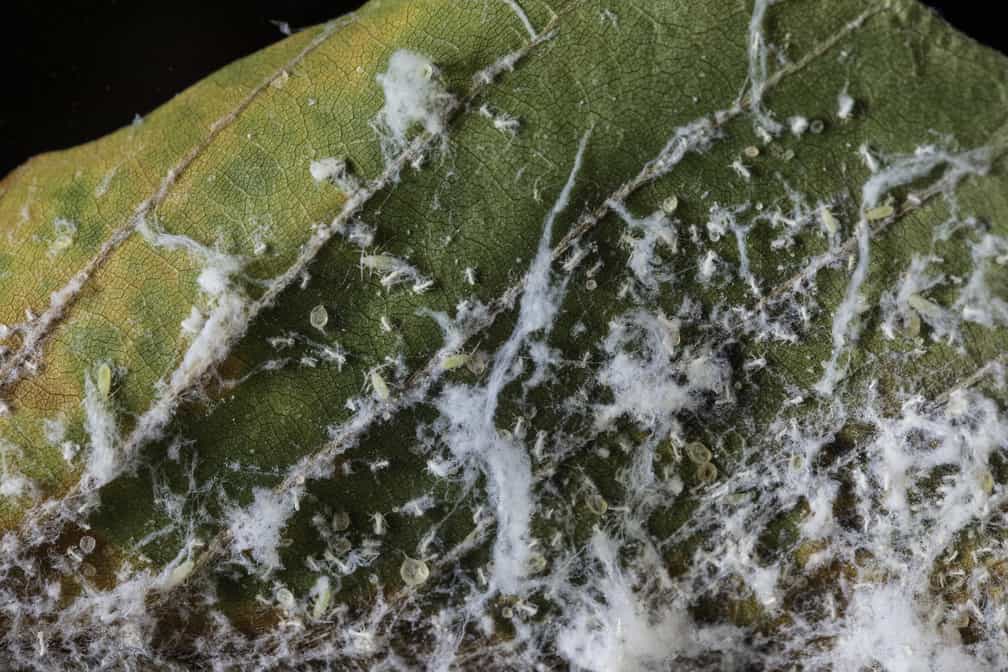Diseases can affect any part of the plant, including the leaves, flowers, stems, and roots. Some diseases are more serious than others and can cause extensive damage to plants. Plant diseases aren’t picky, and both your indoor and outdoor plants can be at risk. While there are many different types of diseases that can affect plants, there are some that seem to crop up more often than others. Here are ten common plant diseases and their solutions.
Powdery mildew

Powdery mildew is one of the most common plant diseases. It affects a wide range of plants, including vegetables, fruits, and ornamentals. Powdery mildew looks like a white or gray powder on the leaves of the affected plant. It typically starts small, but can quickly grow to cover the plant making it appear to be covered in flour.
The best way to prevent powdery mildew is to water your plants early in the day so that the leaves have time to dry before nightfall. This prevention helps keep your plants from getting too moist, which is an environment that encourages mildew growth.
If you already have powdery mildew on your plants, you can use a fungicide to get rid of it. You can also gently wash your plants with a mixture of water and dish soap. This may take a few applications, but has been shown to clean off mildew.
Fusarium wilt
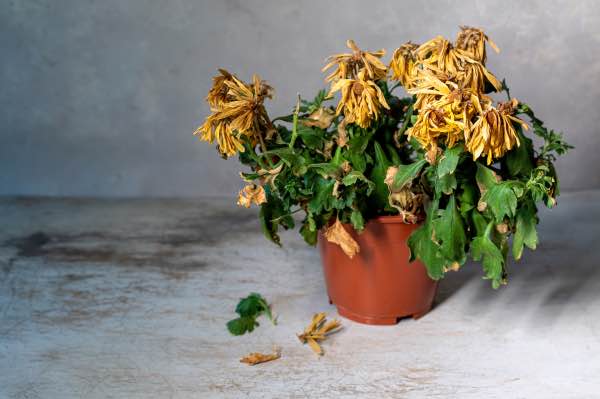
Fusarium wilt is a plant disease that affects tomatoes, peppers, and eggplants, among others. The symptoms of Fusarium wilt include yellowing of the leaves, wilting, and death of the affected plant.
There is no cure for Fusarium wilt, but you can prevent it by planting disease-resistant varieties of tomatoes, peppers, and eggplants. If you do have plants affected by this disease it’s best to simply remove them. This helps prevent the disease from spreading to your healthy plants.
Bacterial leaf Spot
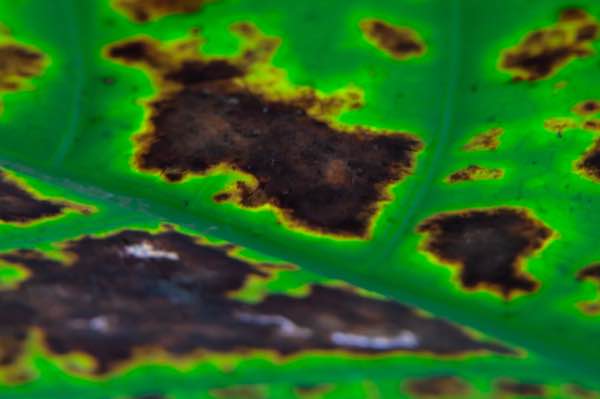
Bacterial leaf spot is another common plant disease. It affects vegetables in the cabbage family, including broccoli, cauliflower, and Brussels sprouts. Bacterial leaf spot looks like small brown or black spots on the leaves of the affected plant. Left untreated, it will spread throughout the leaf, and to other leaves/plants, and eventually kill them.
You can prevent bacterial leaf spot by planting disease-resistant varieties of vegetables in the cabbage family. If you already have a bacterial leaf spot on your plants, you can use a bactericide to get rid of it. You can also aggressively prune back affected leaves to help prevent them from spreading to your other healthy plants.
Damping-off
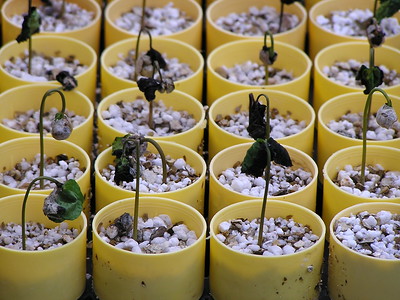
Damping-off is a plant disease that affects seedlings within their first few weeks of sprouting. The symptoms of damping-off include wilting, yellowing, and death of the affected plant. If affected, your plant is likely to die within a few days. Damping-off is caused by a fungus that attacks the roots of the plant.
By planting in sterile potting mix and keeping your garden clean you can prevent damping-off. If you already have damping-off on your plants then it’s best to separate them to hopefully contain the disease. Most plants will not survive damping off, so isolating and reducing the likelihood of spread is your best move.
Leaf Roll
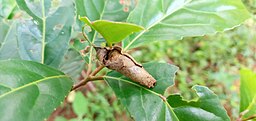
Leaf roll is a plant disease that affects tomatoes, although similar diseases do affect a wide variety of other plants. The symptoms of leaf roll include yellowing and a tell-tale curling of the leaves. Leaf roll is caused by a virus that is spread by aphids.
Leaf roll can be prevented by controlling aphids in your garden. If you already have leaf roll on your plants, there is no cure, and you will need to remove and destroy the affected plants. Note that this is specific to tomato leaf roll and the disease caused by aphids. There are similar issues that aren’t as serious and that your plant may recover from.
Blossom-end Rot
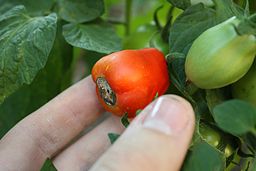
Blossom-end rot is a plant disease that affects tomatoes, peppers, and eggplants. The symptoms of blossom-end rot include dark brown or black spots on the bottom of the fruit. It looks almost as if you soaked the very bottom of the fruit in water. Blossom-end rot is caused by a lack of calcium in the soil and is not a true disease.
You can prevent blossom-end rot by adding calcium to the soil before planting and during the growing season. Products like this exist to help supplement your soil and prevent blossom-end rot from occurring. If you already have the issue then it’s best to remove the selected fruits as there is no cure.
Black Spot
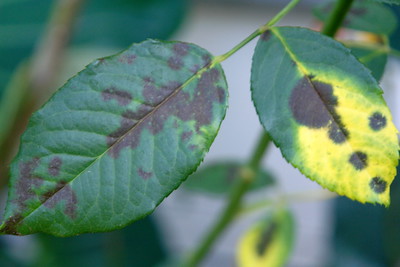
Black spot is a plant disease that affects roses. The symptoms of black spot include black spots on the leaves and stems of the affected plant. Black spot is caused by a fungus that is spread by water droplets. This is one of the most serious rose diseases, and needs to be dealt with swiftly to prevent its spread.
Black spot can be prevented by watering your roses at the base of the plant and not getting the leaves wet. If you already have black spot on your plants, a solution of baking soda, water, and dish soap has been shown to help. This solution also helps to limit the spread and keep other nearby plants/leaves from becoming afflicted.
Mosaic Virus
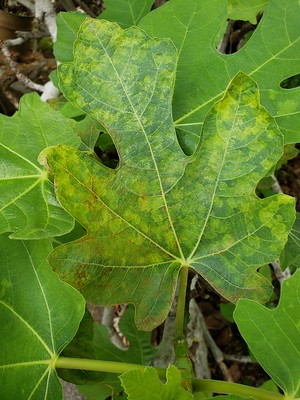
Mosaic virus is a plant disease that affects vegetables in the cucumber family, including cucumbers, squash, and melons. The symptoms of mosaic virus include mottled or yellowed leaves, stunted growth, and reduced yields. Mosaic virus is often spread by aphids, but there are several kinds of this disease that can come from different sources.
By controlling aphids in your garden, you can prevent certain kinds of mosaic virus. If you already have mosaic virus on your plants, there is no cure, and you will need to remove and destroy the affected plants. You should also avoid composing any affected plants as the disease can persist and spread through this matter.
Rust

Rust is a family of plant diseases that affects vegetables in the bean family, including beans, peas, and soybeans. The symptoms of rust include orange or brown spots on the leaves of the affected plant. It gets its name from the damage it causes giving plants a “rust-like” appearance. Rust is caused by a variety of different bacteria that can vary based on your location.
You can prevent rust by planting in well-drained soil and keeping your garden clean. Healthy, strong plants are better able to resist the infection. If you already have rust on your plants, you can use a solution of dish soap and water or a fungicide to get rid of it.
Downy mildew
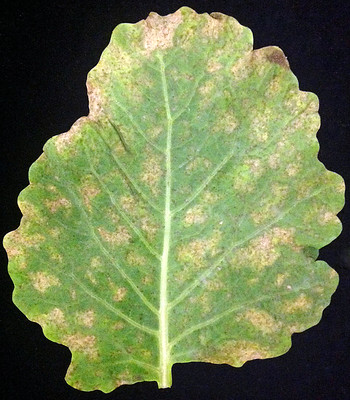
Downy mildew is a plant disease that affects vegetables in the cucumber family, including cucumbers, squash, and melons. The symptoms of downy mildew include yellow spots on the top of the leaves and grayish-white spots on the bottom of the leaves. Downy mildew is caused by a variety of bacteria. Despite its name, it is unrelated to powdery mildew and is caused by different types of bacteria.
Downy mildew is preventable by planting in well-drained soil and keeping your garden clean. Well taken care of gardens are better suited to resist the bacteria. If you already have downy mildew on your plants, you can use a fungicide to get rid of it, or a dish-soap and water solution.
Common Plant Diseases
There are many other plant diseases that gardeners may encounter, this is just a small sample of some of the most common. This is by no means an exhaustive list, there are dozens of variations of the above and many more less-common issues a gardener might face.
Most plant diseases can be controlled with the proper precautions and treatments. By being aware of these diseases, you can keep your plants healthy and avoid problems in your garden. A well taken care of garden is much less likely to succumb to disease than a neglected one. Plants that are weak or sick are much more susceptible to disease, so keeping up on proper care is a great way to prevent any issues from happening.
If you think your plant has a disease, it is important to consult a professional for diagnosis and treatment. Some diseases can be difficult to treat and may require special chemicals or procedures. In some cases, it may be necessary to destroy the plant to prevent the disease from spreading.
It can also be hard to differentiate certain diseases that exhibit common symptoms. You want to be very careful in identifying your plant’s issues so that you can provide proper care.
If you have any plant disease questions, let us know and we’ll do our best to answer them. Feel free to email us, or reach out to us over social media. Send us a picture of the affected plant, and we’ll do our best to help you.

